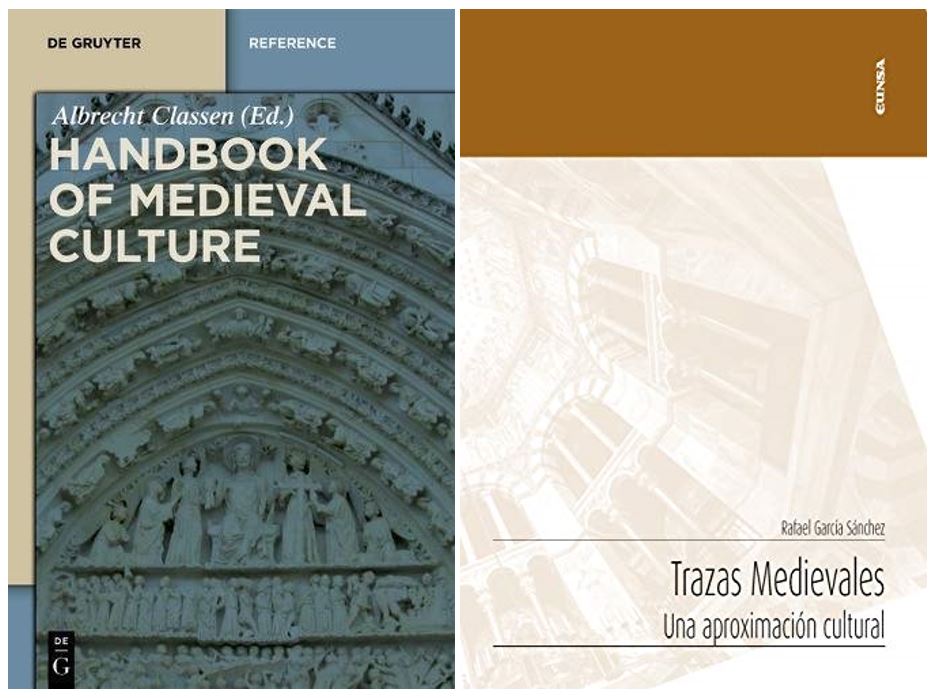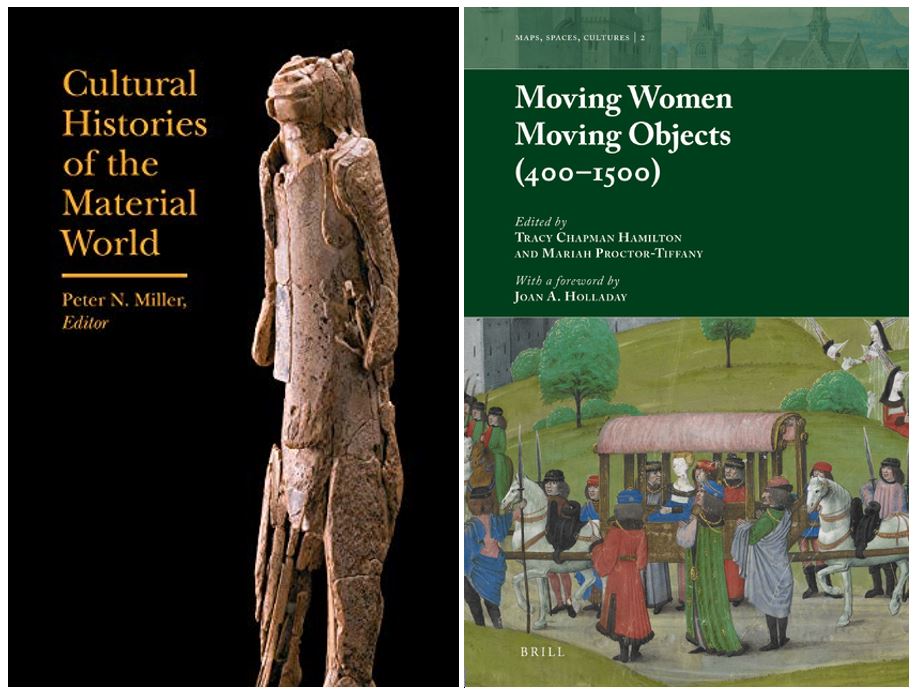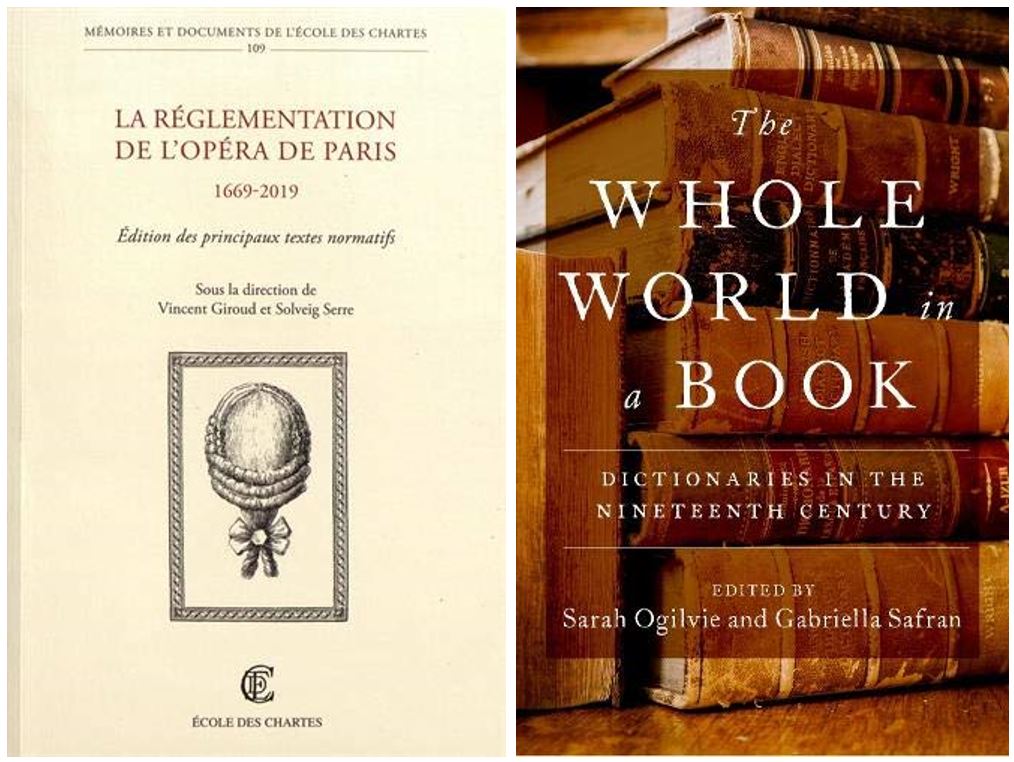Bodleian New History Books: February 2020 – Cultural History
Under the name of Kulturgeschichte cultural history as a widely inclusive discipline has been practiced for more than two centuries, when the historical studies of previously separate areas such as philosophy, music, literature, art, and language were subsumed under the umbrella term of ”human culture” (Burke, 2019, p.7), and attention turned to studying these combined issues for the whole of an individual country or defined era of time instead. A classic of the genre, Huizinga’s 1919 The Waning of the Middle Ages deals not only with masterpieces of art, music, philosophy, but also with the connections between various pieces of art their historical and societal context (the “spirit of the age” or “Zeitgeist”), reading pieces of art, paintings, or poems as evidence of the culture of the society in which they were produced. But the definition of “culture” as comprising of such masterpieces of art or literature has of course long vanished – already Thompson’s 1963 The Making of the English Working Class looked at culture as a sphere which included everything from economic and political changes to food and dialect poetry (Burke, 2019). Around the same time cultural historians then also discovered “popular culture” or “Volkskultur”, such as expressed folk tales, songs, dances, rituals and traditions, arts and crafts, again in their wider context – Hobsbawm’s 1959 The Jazz Scene considers this style of music alongside its audience and societal implications.
In the 1980s the term ‘cultural history’ itself also changed meaning, so that it covered quite traditional histories of artistic and intellectual production as well as something different, called the “new cultural history”. Since then the boundaries of the subject have continuously stretched – by now the elite “high” culture of art and objects d’art, architecture, music, literature, philosophy and sciences has expanded both “downwards” to include “low” or popular culture, and also widthways to include, say, not only paintings but images of any kind, not only plastic art but the tools used to make it, not only art but artisan crafts, not just architecture but simply the houses people live in, not just ballet and theatre but folk dances and games, and not only literature but also people’s everyday reading habits (Burke, 2019).
Modern cultural history studies beliefs and ideas of intellectual elites as well as the often unwritten notions of the less privileged and less educated. It looks at artistic cultural expressions as well as the objects and experiences of everyday life, and at everyday attitudes, values, assumptions, and prejudices, and the behaviours that express them (Rubin, 2008). In short, today cultural history by no means restricts itself to the study of what used to be understood as “culture”, as in, activities within the sphere of ‘high culture’; nor is it exclusively “history”, as in, the interpretation of symbolic acts and rituals of people in the past. “Cultural studies” encompass anything from political economy to geography, sociology, social theory, literary theory, film/video studies, cultural anthropology, philosophy, and art history and criticism. Studies published over the last two decades that call themselves “a cultural history” have covered, for example (in a sense that goes back somewhat to the old idea of Kulturgeschichte) whole countries or regions such as Australia, Andalucia, or Provence, but also such rather diverse human ideas, organisations, issues and institutions the American Dream, the Mafia, idiocy, impotence, and Japanese love hotels.
It seems true, then, that in this day and age cultural history has become the ”history of everything” – maybe T.S. Eliot in his Notes Towards the Definition of Culture just said it best:
Taking now the point of view of identification, the reader must remind himself as the author has constantly to do, of how much is there embraced in the term culture. It includes all the characteristic activities and interests of a people: Derby Day, the Henley Regatta, Cowes, the twelfth of August, a cup final, the dog races, the pin table, the dart board, Wensleydale cheese, boiled cabbage cut into sections, beetroot in vinegar, nineteenth-century Gothic churches and the music of Elgar. The reader can make his own list.
In the spirit of Eliot, the new Bodleian books I would like to highlight in this month’s blog are still very much historical studies, but of a rather wide range of eras and locations, and well as of widely diverse subjects – all of which, however, can still be classed under the great umbrella term of “cultural history”.
 Two new studies ambitiously aim at a comprehensive view of “culture” throughout a specific era, namely the Middle Ages – Albrecht Classen’s Handbook of Medieval Culture, a follow-up publication to the 3-volume Handbook of Medieval Studies, offers compact articles on essential topics, ideals, specific knowledge, and concepts defining the medieval world from issues such as love and marriage, belief in God, hell and the devil, education, lordship and servitude, Christianity versus Judaism and Islam, health, medicine, the rural world, the rise of the urban class, travel, roads and bridges, entertainment, games and sport activities, numbers, measuring, the education system, the papacy, saints, the senses, death, and money – and is thus a history of medieval “culture” very much in T.S. Eliot’s sense of the term. A slightly different approach is taken by Rafael García Sánchez in Trazas medievales: una aproximación cultural: arguing against the still persisting image of the Middle Ages as an era of illiterate rural communities, he presents them as a time of cultured urbanity, touching on a wide variety of social, religious, economic, literary and artistic cultural spheres and influences from Christianity and the role of the Church, monasteries, and cathedrals to universities, boroughs and castles; and from scribes to guilds, bankers, and artists.
Two new studies ambitiously aim at a comprehensive view of “culture” throughout a specific era, namely the Middle Ages – Albrecht Classen’s Handbook of Medieval Culture, a follow-up publication to the 3-volume Handbook of Medieval Studies, offers compact articles on essential topics, ideals, specific knowledge, and concepts defining the medieval world from issues such as love and marriage, belief in God, hell and the devil, education, lordship and servitude, Christianity versus Judaism and Islam, health, medicine, the rural world, the rise of the urban class, travel, roads and bridges, entertainment, games and sport activities, numbers, measuring, the education system, the papacy, saints, the senses, death, and money – and is thus a history of medieval “culture” very much in T.S. Eliot’s sense of the term. A slightly different approach is taken by Rafael García Sánchez in Trazas medievales: una aproximación cultural: arguing against the still persisting image of the Middle Ages as an era of illiterate rural communities, he presents them as a time of cultured urbanity, touching on a wide variety of social, religious, economic, literary and artistic cultural spheres and influences from Christianity and the role of the Church, monasteries, and cathedrals to universities, boroughs and castles; and from scribes to guilds, bankers, and artists.
 More specialised in the subjects (or rather objects) of its study, but with a rather wider view of both time and location, Peter N. Miller’s Cultural Histories of the Material World looks at the study of material culture from a historical perspective, and explores how studying material and materiality can enable new and different cultural historical perspectives. The topics touched on range from prehistoric to indigenous and postcolonial art, from antiquarian collectors to Chinese landscape inscriptions, and from music and recipes to the history of Facebook. Material culture is also at the centre of Tracy Chapman Hamilton’s intriguing Moving Women Moving Objects (400-1500), which discusses medieval aristocratic and royal women, their relationships with their objects, and medieval geography. It follows the movement of their belongings to trace their widespread familial and geographic spaces, from early medieval Scandinavia to Byzantium and Rus’, and various European countries, looking not only at manuscripts, sculpture or liturgical and secular ceremonial instruments, but at everyday personal items such as textiles, jewellery, and even shoes.
More specialised in the subjects (or rather objects) of its study, but with a rather wider view of both time and location, Peter N. Miller’s Cultural Histories of the Material World looks at the study of material culture from a historical perspective, and explores how studying material and materiality can enable new and different cultural historical perspectives. The topics touched on range from prehistoric to indigenous and postcolonial art, from antiquarian collectors to Chinese landscape inscriptions, and from music and recipes to the history of Facebook. Material culture is also at the centre of Tracy Chapman Hamilton’s intriguing Moving Women Moving Objects (400-1500), which discusses medieval aristocratic and royal women, their relationships with their objects, and medieval geography. It follows the movement of their belongings to trace their widespread familial and geographic spaces, from early medieval Scandinavia to Byzantium and Rus’, and various European countries, looking not only at manuscripts, sculpture or liturgical and secular ceremonial instruments, but at everyday personal items such as textiles, jewellery, and even shoes.
 Two other new books look at the rather more traditional sphere of “high culture”, here in the areas of music and language – though, in the spirit of a more modern definition of culture, connected to wider issues of politics, economics and society. La réglementation de l’Opéra de Paris, 1669-2019 actually eschews the much-studied issues of performers and performances, and instead brings together editions of principal administrative documents of the Parisian Opera, which regulated artistic, economic and social aspects of its performances, and allow researchers to explore the links between the Opera and political power over the space of three and a half centuries. Less wide in time, but ranging wider geographically is The Whole World in a Book, which offers studies of dictionaries in the 19th century, from British and American English to French, German, Russian, and further afield to Chinese, Japanese, Arabic, Persian, Greek, and Latin. The different contributions explore the position of dictionaries as tools of national identity and social inclusiveness in a period of globalization, industrialization, social mobility, new technologies and ways of communication which were dramatically changing languages, and in which rising literacy rates, book consumption, and advertising led to a unprecedented popularization of the dictionary.
Two other new books look at the rather more traditional sphere of “high culture”, here in the areas of music and language – though, in the spirit of a more modern definition of culture, connected to wider issues of politics, economics and society. La réglementation de l’Opéra de Paris, 1669-2019 actually eschews the much-studied issues of performers and performances, and instead brings together editions of principal administrative documents of the Parisian Opera, which regulated artistic, economic and social aspects of its performances, and allow researchers to explore the links between the Opera and political power over the space of three and a half centuries. Less wide in time, but ranging wider geographically is The Whole World in a Book, which offers studies of dictionaries in the 19th century, from British and American English to French, German, Russian, and further afield to Chinese, Japanese, Arabic, Persian, Greek, and Latin. The different contributions explore the position of dictionaries as tools of national identity and social inclusiveness in a period of globalization, industrialization, social mobility, new technologies and ways of communication which were dramatically changing languages, and in which rising literacy rates, book consumption, and advertising led to a unprecedented popularization of the dictionary.
 The remaining four new books I would highlight in this blog are probably best classed as belonging to a wider area of the “history of culture and ideas”, with a focus on the way human ideas, opinions, and emotions shape human culture. Two of these deal mainly with the medieval world: a Festschrift for William Ian Miller, Emotion, Violence, Vengeance and Law in the Middle Ages, keeps what its title promises, and offers a truly wide-ranging selection of studies connected with these four aspects of human culture and society. A section on emotions, violence, vengeance and law in Medieval historical sources contains studies of early modern German homicide trials, trials by ordeal in Medieval England and the issues of gender and genitalia in 14th century Swiss courts, while studies of literary sources range from contributions on Njáls saga and the feuds of Norwegian kings to sexual revenge, vengeance in movies set in the Middle Ages, decapitation in Iron-Age Mesopotamia, and silence as a weapon in Sense and Sensibility. A rather more pleasant aspect of medieval culture is the topic of Lars Kjaer’s The Medieval Gift and the Classical Tradition, which explores how classical ideals of generosity influenced the writing and practice of gift giving in medieval England from 1100 to 1300. Instead of reading medieval gift giving as deriving from oral ‘folk models’ as proposed by social anthropologists and sociologists, the study looks at the impact of classical literature and philosophy on this particular aspect of medieval culture and ritual, and at how ideas from, for example, Seneca the Younger’s De beneficiis and Cicero’s De officiis were received, adapted and utilised by medieval writers across a range of genres, and influenced the practice of generosity.
The remaining four new books I would highlight in this blog are probably best classed as belonging to a wider area of the “history of culture and ideas”, with a focus on the way human ideas, opinions, and emotions shape human culture. Two of these deal mainly with the medieval world: a Festschrift for William Ian Miller, Emotion, Violence, Vengeance and Law in the Middle Ages, keeps what its title promises, and offers a truly wide-ranging selection of studies connected with these four aspects of human culture and society. A section on emotions, violence, vengeance and law in Medieval historical sources contains studies of early modern German homicide trials, trials by ordeal in Medieval England and the issues of gender and genitalia in 14th century Swiss courts, while studies of literary sources range from contributions on Njáls saga and the feuds of Norwegian kings to sexual revenge, vengeance in movies set in the Middle Ages, decapitation in Iron-Age Mesopotamia, and silence as a weapon in Sense and Sensibility. A rather more pleasant aspect of medieval culture is the topic of Lars Kjaer’s The Medieval Gift and the Classical Tradition, which explores how classical ideals of generosity influenced the writing and practice of gift giving in medieval England from 1100 to 1300. Instead of reading medieval gift giving as deriving from oral ‘folk models’ as proposed by social anthropologists and sociologists, the study looks at the impact of classical literature and philosophy on this particular aspect of medieval culture and ritual, and at how ideas from, for example, Seneca the Younger’s De beneficiis and Cicero’s De officiis were received, adapted and utilised by medieval writers across a range of genres, and influenced the practice of generosity.
 The final two studies deal with aspects of culture in early modern Europe. Tony Claydon’s The Revolution in Time explores how people in Western Europe changed the way they thought about the concept of time over the early modern period, specifically focussing on reactions to the 1688-1689 revolution in England. Claydon presents a complex model of changes in chronological conception at the time, looking at how contemporaries fit the rapid changes of the revolution into their concept of history, and how new ideas about chronology and time allowed the revolution to be seen as the start of a new era, rather than as a reiteration of timeless principles of politics, or as a stage in an eternal and pre-determined struggle for true religion. Finally, the contributions in a new collection on Cultures of Calvinism in Early Modern Europe emphasize that Reformed Protestantism did not present as a uniform tradition but varied across space and time, with multiple iterations of Calvinism developing and impacting upon differing European communities. In this they cover a wide field, discussing the association of Calvinism with print and literary cultures, with republican, liberal, and participatory political cultures, with cultures of violence and vandalism, enlightened cultures, cultures of social discipline, secular cultures, and with the emergence of capitalism.
The final two studies deal with aspects of culture in early modern Europe. Tony Claydon’s The Revolution in Time explores how people in Western Europe changed the way they thought about the concept of time over the early modern period, specifically focussing on reactions to the 1688-1689 revolution in England. Claydon presents a complex model of changes in chronological conception at the time, looking at how contemporaries fit the rapid changes of the revolution into their concept of history, and how new ideas about chronology and time allowed the revolution to be seen as the start of a new era, rather than as a reiteration of timeless principles of politics, or as a stage in an eternal and pre-determined struggle for true religion. Finally, the contributions in a new collection on Cultures of Calvinism in Early Modern Europe emphasize that Reformed Protestantism did not present as a uniform tradition but varied across space and time, with multiple iterations of Calvinism developing and impacting upon differing European communities. In this they cover a wide field, discussing the association of Calvinism with print and literary cultures, with republican, liberal, and participatory political cultures, with cultures of violence and vandalism, enlightened cultures, cultures of social discipline, secular cultures, and with the emergence of capitalism.
You can find more books on the topic on our LibraryThing virtual shelf, tagged as “cultural history“.












